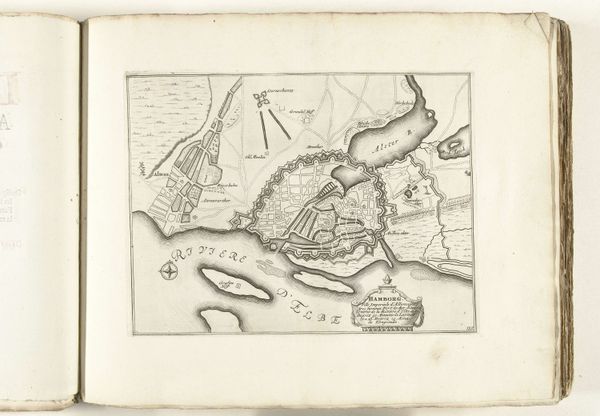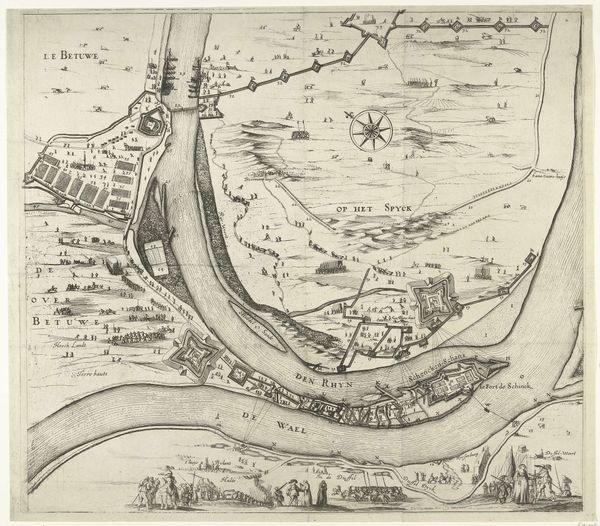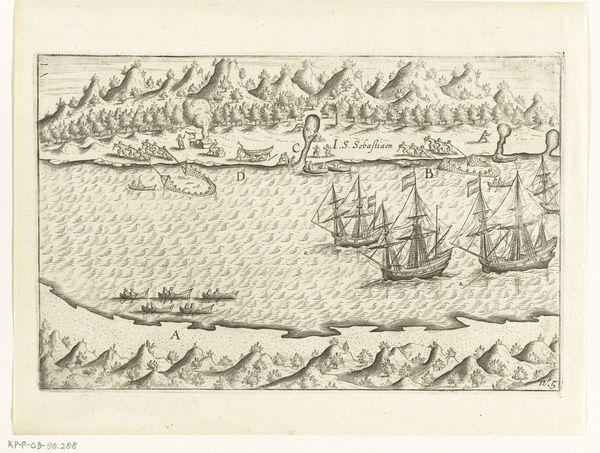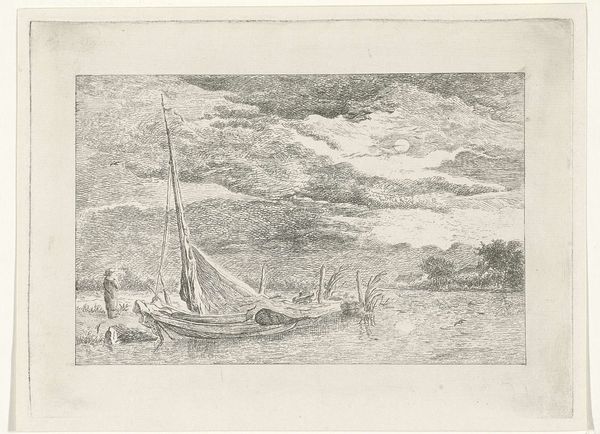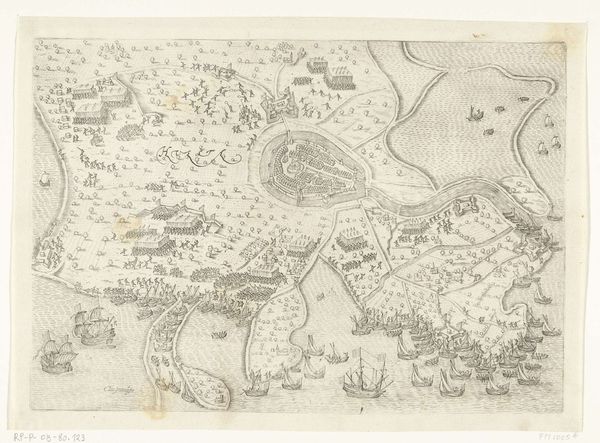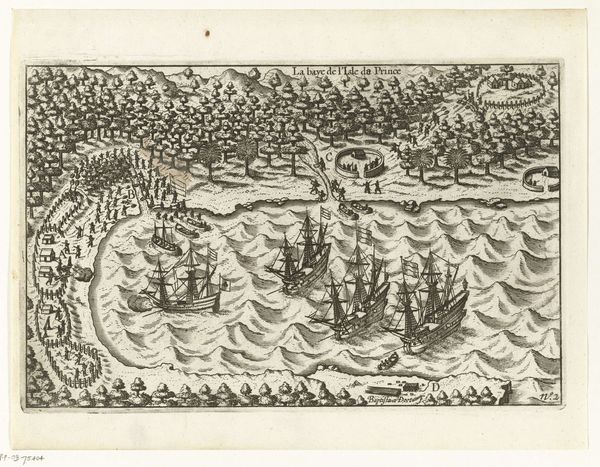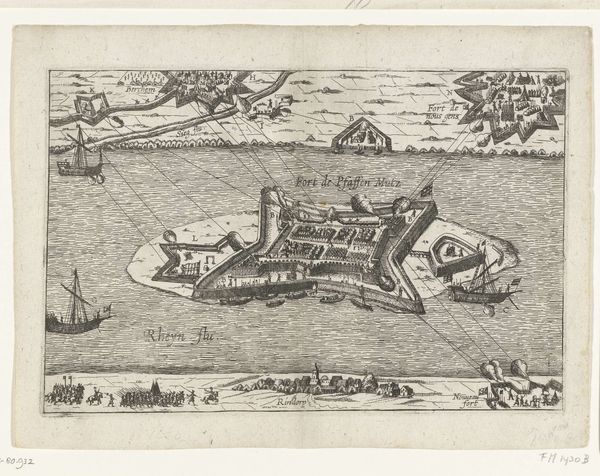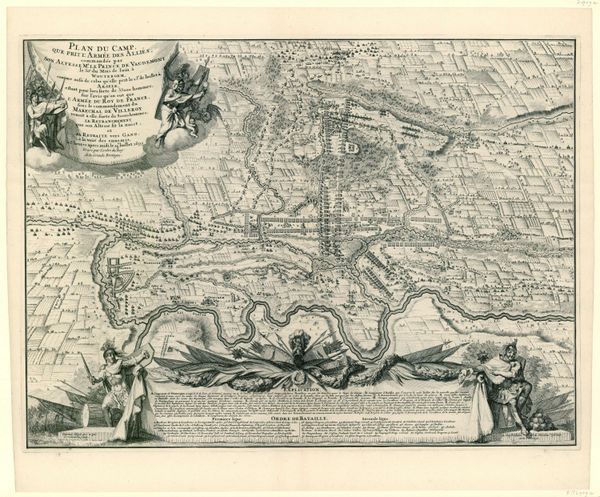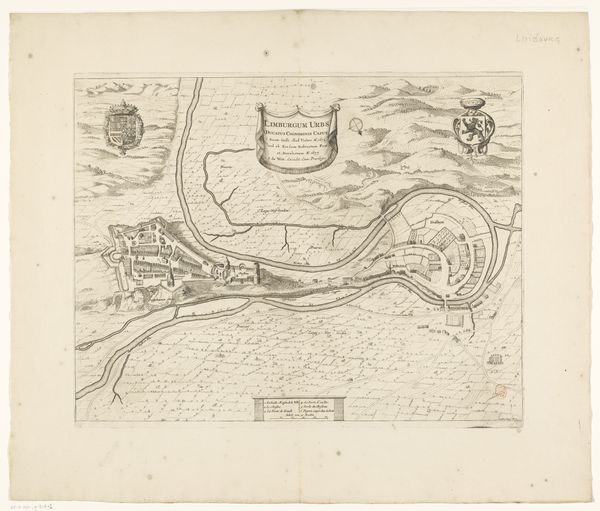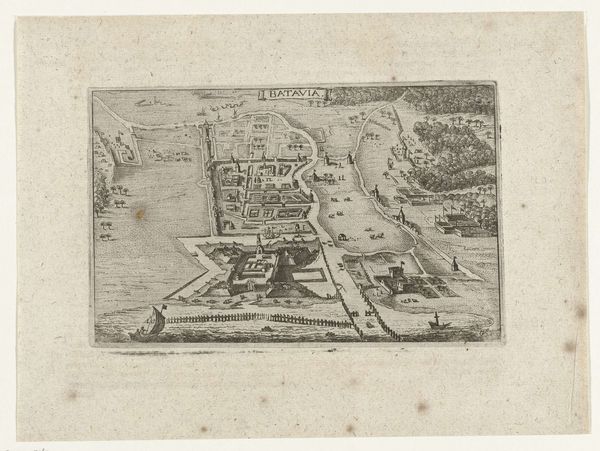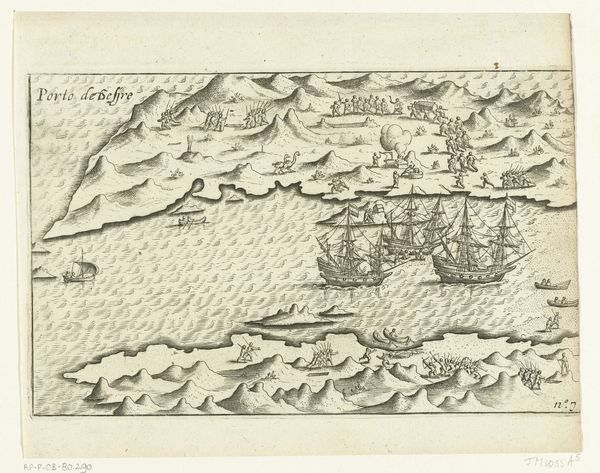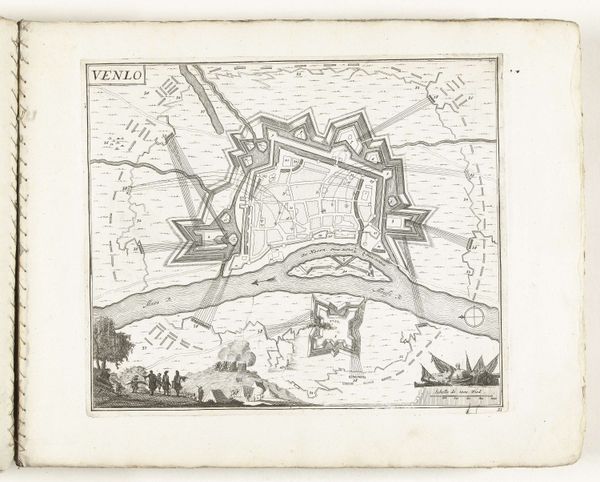
drawing, print, paper, ink, engraving
#
drawing
# print
#
asian-art
#
paper
#
ink
#
engraving
Dimensions: height 154 mm, width 440 mm
Copyright: Rijks Museum: Open Domain
Editor: This ink on paper engraving, "Doorvaart van de Straat van Manila in de Filipijnen, 1616", thought to be from between 1617 and 1646, offers an early depiction of the Manila Strait. It strikes me as a somewhat romanticized and overtly Western representation of a distant land. What can you tell me about the context in which this image was created? Curator: Well, considering the socio-political climate of the 17th century, it is quite likely that this "romanticized" lens, as you put it, was deliberate. Maps weren't just navigational tools. They played a significant role in solidifying colonial power. How do you think the inclusion of Indigenous figures impacts our understanding of this map’s political implications? Editor: I guess their placement makes the map feel more 'complete,' as though it documents both the land and its inhabitants. It's like they are part of the territory being claimed. Does the way the mapmakers include Indigenous people in these kinds of works ever challenge or subvert colonial narratives, or is it mostly about reinforcing them? Curator: It’s a crucial question! The act of depiction itself can carry immense power. I'd argue that while Indigenous figures were included, they were often positioned as subjects within a European framework. Consider their dress, their posture. Were they portrayed with agency, or were they simply objects within the landscape? Such maps could influence public perception back in Europe, shaping attitudes toward colonization and trade. Editor: That makes sense. So the very act of selecting what to include and how to portray it solidifies the power dynamic. Thanks, I hadn’t considered maps in this light before. Curator: Indeed. Examining art within its historical context, even seemingly straightforward pieces like this map, can reveal complex layers of meaning.
Comments
No comments
Be the first to comment and join the conversation on the ultimate creative platform.
